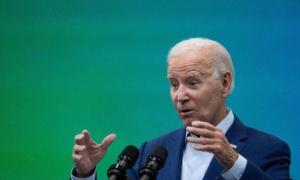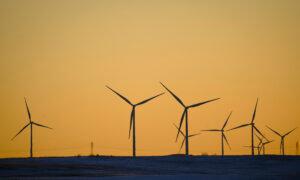21 states are taking part in the initiative to modernize the grid and accommodate the growing demand for renewable fuel.
The Biden administration launched an initiative on Tuesday to “bolster America’s power grid” by improving the country’s power grid infrastructure and preparing it for better integration with renewable energy sources.
So far, 21 states have committed to the initiative, vowing to prioritize capacity expansion and the building of modern grid capabilities for both existing and new transmission and distribution lines.
Bolstering the U.S. power grid is part of President Biden’s climate change policies. In the Federal-State Modern Grid Deployment Initiative, the 21 states committed to increasing grid resilience to “the growing impacts of climate change.”
The White House noted that the initiative moves away from the historical practice of setting up transmission lines to boost grid capacity toward the modernization of the power systems.
For instance, high-performance conductors can carry at least twice the power of conventional conductors. Grid-enhancing technologies maximize electricity transmission across the existing system through sensors, analytical tools, and power flow control devices.
“Deploying these tools means that renewables and other clean sources of power can be integrated sooner and more cost-effectively than waiting for new transmission construction, which will address load growth challenges more rapidly, create good-paying jobs, and lower Americans’ utility bills,” according to the White House.
The 21 states participating in the initiative are Arizona, California, Colorado, Connecticut, Delaware, Hawaii, Illinois, Kentucky, Maine, Maryland, Massachusetts, Michigan, New Jersey, New Mexico, New York, North Carolina, Oregon, Pennsylvania, Rhode Island, Washington, and Wisconsin.
Viability of the Renewable Grid
Solar and wind energy are intermittent and do not generate consistent power, as electricity generation depends on variables such as sunlight and wind conditions. The lack of reliability is an issue for U.S. households when considering the push for greater integration of renewable energy into the U.S. power grid.
The $30 billion is only a fraction of the trillions required to make the U.S. power grid ready for renewable energy. A 2019 estimate by Wood Mackenzie put the cost of decarbonizing the U.S. power grid at $4.5 trillion.
The Texas RE ERCOT (Electric Reliability Council of Texas) interconnection, which handles approximately 90 percent of Texas’ electrical load, faces potential emergency conditions in summer evening hours “when solar generation begins to ramp down,” it said.
Michelle Bloodworth, the CEO of America’s Power, a partnership of industries involved in producing electricity from coal, said the NERC assessment reveals that the U.S. electricity grid is “increasingly reliant on weather-dependent sources of electricity” like solar and wind power.
This puts “one-third of the country at elevated risk of blackouts this summer,” she said. “Delayed coal plant retirements are playing a key role in supporting grid reliability. However, this is only a temporary band-aid because EPA regulations will cause more coal retirements that cannot be delayed. These regulations, especially the recently announced Carbon Rule, increase the chance of blackouts.”
Last month, the administration announced a public-private mobilization to upgrade 100,000 miles of existing lines over the next five years. For this purpose, the government is accelerating permitting, and funding the deployment of advanced grid technologies.
All of these programs seek to advance President Biden’s Justice40 Initiative which has a goal of ensuring that 40 percent of overall benefits of certain federal programs related to climate, clean energy, affordable and sustainable housing, and other investments go to “disadvantaged communities,” the White House said.
Original News Source Link – Epoch Times
Running For Office? Conservative Campaign Consulting – Election Day Strategies!


